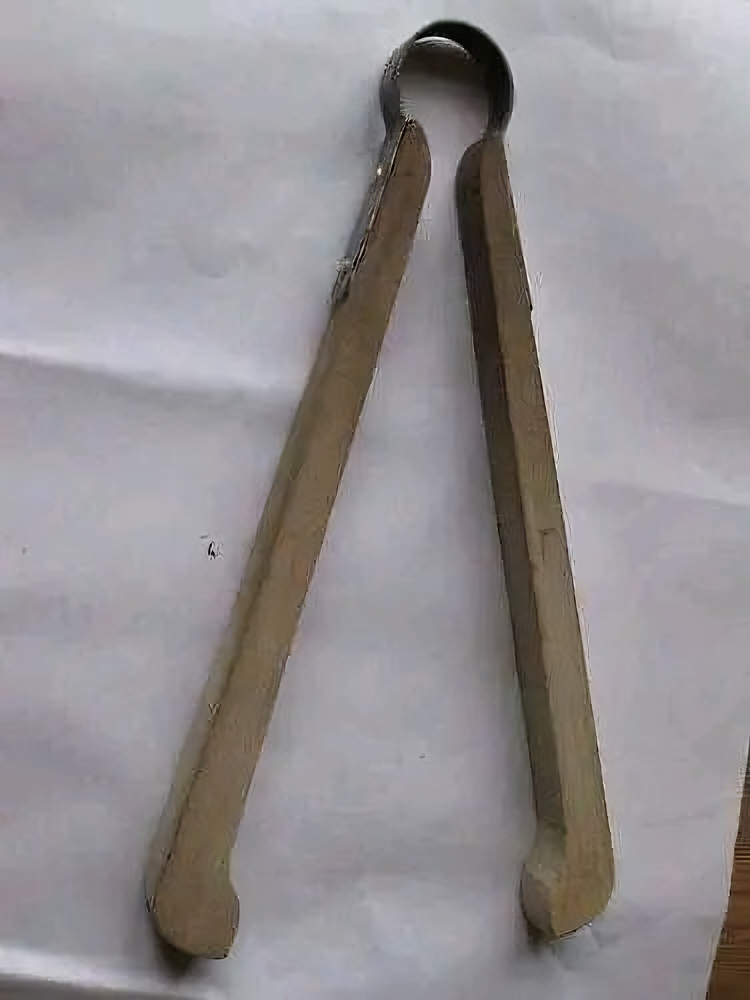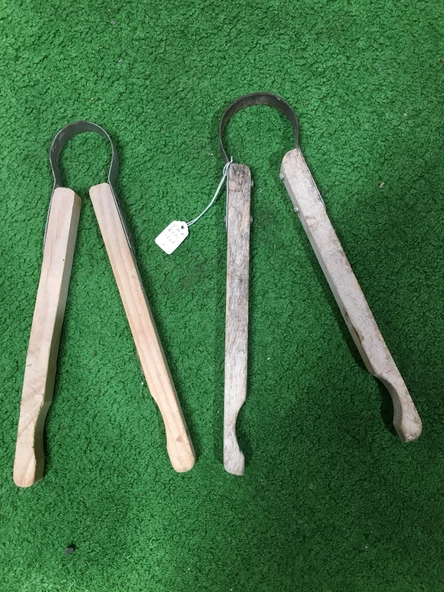Throughout history, everyday tasks have inspired the invention of simple yet essential tools. Washing tongs are one such tool, designed specifically to handle wet clothes from hot water tubs or copper boilers. This article explores the history, design, and evolution of washing tongs, highlighting how a seemingly ordinary tool became a staple in households.
What Are Washing Tongs?

Washing tongs are basic tools made from light pine wood and metal, designed to handle hot laundry. The tongs consist of two wooden arms joined at one end with a flexible metal piece. Each arm is indented at the ends, allowing users to grip laundry securely, even when dealing with high temperatures. This straightforward yet effective design has made washing tongs an essential tool for centuries.
The Historical Significance of Washing Tongs
Before the advent of washing machines and dryers, laundry was a labor-intensive task. People often boiled clothes in copper tubs to sanitize them, and washing tongs were used to handle the hot, wet laundry without burning their hands. The origins of this tool date back to a time when hand-washing was the only option, and it became a necessity for safely removing clothes from boiling water.
A Brief Introduction to Tongs and Their Variations
Tongs have been a vital tool throughout human history. While the basic design remains the same—a tool with two arms joined at one end for gripping—tongs come in various shapes and sizes. From culinary tongs for handling food to blacksmith tongs for gripping hot metal, each type is tailored for a specific use. Washing tongs are no exception, crafted specifically for managing wet laundry in hot water.
The Origins of Tongs: A Glimpse into Ancient Innovations
The concept of tongs dates back to ancient civilizations. Around 1450 BC, the Egyptians invented tong-like tools to handle hot objects in their kitchens and workshops. The design of tongs has proven so effective that it remains largely unchanged to this day. As tongs became more specialized, washing tongs emerged as a solution for handling wet laundry, a task that required both heat resistance and a firm grip.
Design and Construction of Washing Tongs
Washing tongs are typically made from two pieces of light pine wood, chosen for its durability and lightweight properties. The arms are joined by a flat, flexible metal strip, which provides the necessary spring and tension for gripping. This simple construction makes washing tongs easy to use, durable, and resistant to heat. The indented ends of the arms are particularly important, as they allow for a better grip on slippery, wet fabric.
Why Were Washing Tongs So Essential?
In the days before washing machines, boiling water was commonly used to sanitize and clean clothes. Handling hot, wet laundry posed a risk of burns and discomfort, which is where washing tongs came in. These tongs allowed users to easily retrieve items from hot water, making the laundry process safer and more manageable. The convenience and practicality of washing tongs made them a common household item for generations.
The Role of Washing Tongs in Modern Times

While washing machines and dryers have largely replaced the need for washing tongs, they are still used in some traditional settings or as part of a vintage laundry collection. Today, washing tongs are appreciated not just for their functionality but also for their historical value. They serve as a reminder of the evolution of domestic tools and the ingenuity behind everyday items.
The Broader Impact of Tongs in Various Fields
Washing tongs are just one example of how tongs have been adapted for different tasks. Tongs play an important role in various professions:
- Cooking: From flipping food on a grill to serving salads, culinary tongs are essential in kitchens worldwide.
- Blacksmithing: Blacksmiths use heavy-duty tongs to hold and shape hot metal, demonstrating the tool’s versatility.
- Laboratories: In scientific settings, crucible tongs allow researchers to handle small, heated vessels safely.
Each type of tongs has evolved to meet the specific demands of its intended task, highlighting the adaptability of this simple tool.

The Enduring Appeal of Simple Tools Like Washing Tongs
Though technology continues to advance, there’s something uniquely satisfying about using traditional tools like washing tongs. They remind us of a time when tasks required more physical effort and ingenuity. Washing tongs, like many other historical tools, embody a timeless design that has endured because it works.
Conclusion: Honoring the Legacy of Washing Tongs
Washing tongs may seem like a small, unremarkable tool, but their impact on daily life is undeniable. From helping our ancestors with laundry to becoming cherished relics of the past, these tongs tell a story of practicality, ingenuity, and resilience. So the next time you come across a pair of washing tongs, take a moment to appreciate the history and craftsmanship behind this simple yet invaluable tool.